
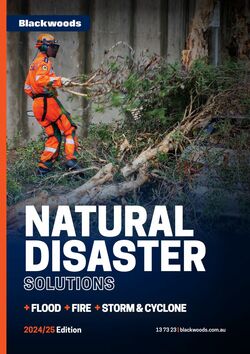



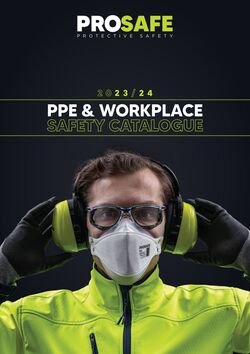
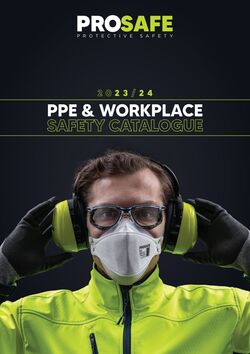




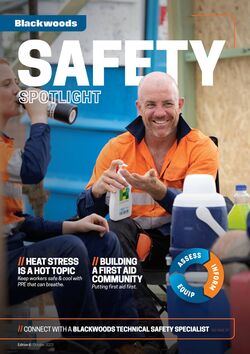
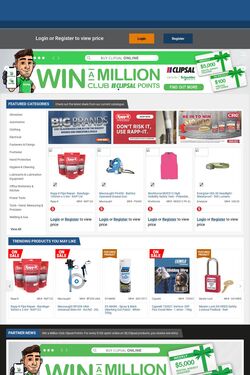
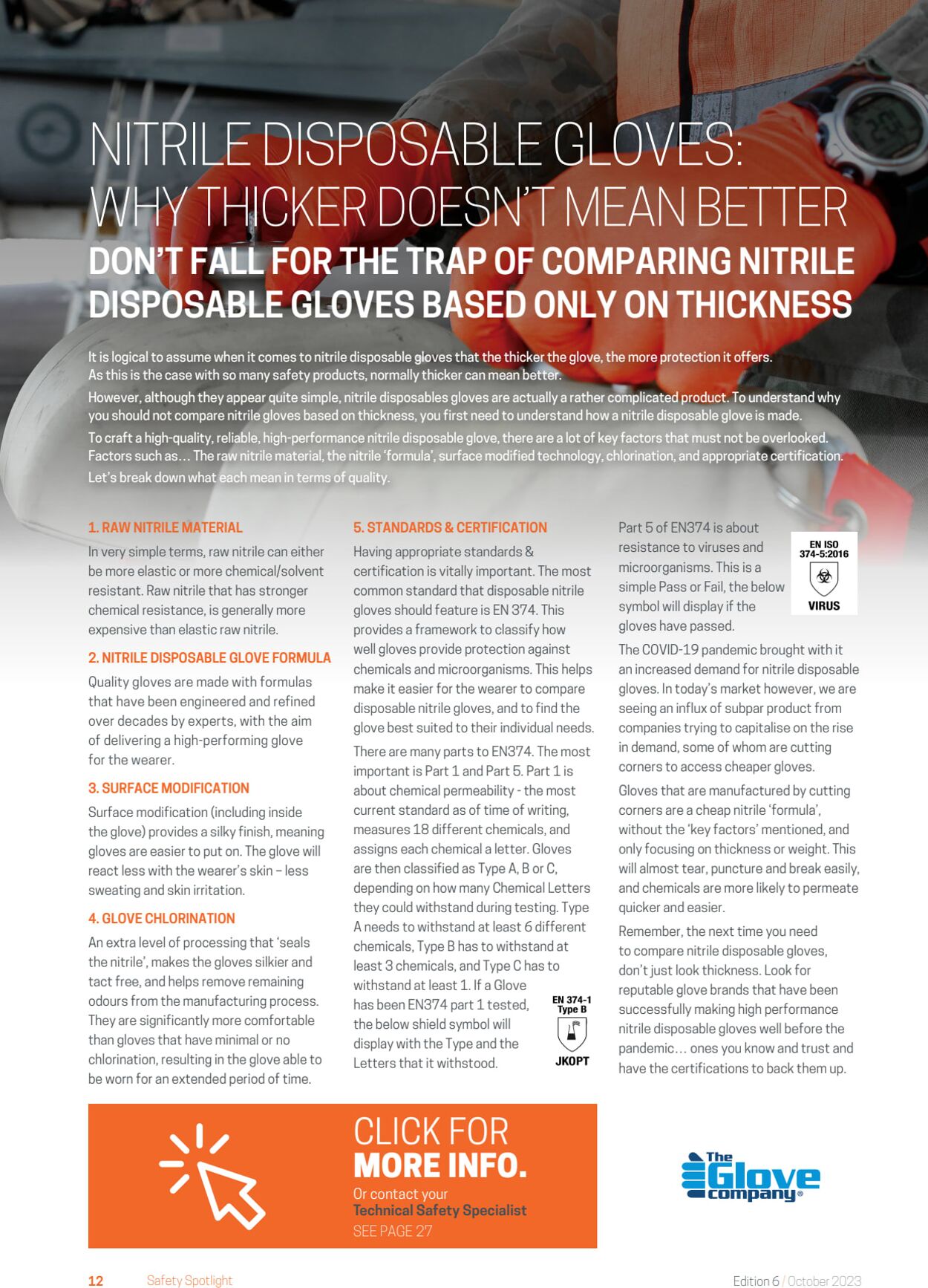
Products in this catalogue
NITRILE DISPOSABLE GLOVES: ao THICKER DOESN'T MEAN PEM ey ole ers BOER n ee eR One Kelis) (fe oN Raa the ieee re) — Pee eens tacit aie cues iaiceay ts. aan UWA Ume- eae LAR CaLoa alo) oLclme iets) Mall Leelee Rt otES In very simple terms, raw nitrile can either be more elastic or more chemical/solvent resistant. Raw nitrile that has stronger chemical resistance, is generally more expensive than elastic raw nitrile. Quality gloves are made with formulas that have been engineered and refined over decades by experts, with the aim of delivering a high-performing glove for the wearer. Surface modification (including inside the glove) provides a silky finish, meaning gloves are easier to put on. The glove will react less with the wearer's skin - less sweating and skin irritation. An extra level of processing that ‘seals the nitrile’, makes the gloves silkier and tact free, and helps remove remaining odours from the manufacturing process. They are significantly more comfortable than gloves that have minimal or no chlorination, resulting in the glove able to be worn for an extended period of time. lle disposables gloves are actually a rather complicated product. To understand why you should not compare nitrile gloves based on thickness, you first need to understand how a nitrile disposable glove is made. BNarie Mule me MAC Malem sacle tal eke yeet-l) Ns (MEIC Y- | lend <1 hs ects Eifel tLe) ou ole om De Turia ue a ear Aurel cereus) A Having appropriate standards & certification is vitally important. The most common standard that disposable nitrile gloves should feature is EN 374. This provides a framework to classify how well gloves provide protection against chemicals and microorganisms. This helps make it easier for the wearer to compare disposable nitrile gloves, and to find the glove best suited to their individual needs. There are many parts to EN374. The most important is Part 1 and Part 5. Part Lis about chemical permeability - the most current standard as of time of writing, measures 18 different chemicals, and assigns each chemical a letter. Gloves are then classified as Type A, B or C, depending on how many Chemical Letters they could withstand during testing. Type Aneeds to withstand at least 6 different chemicals, Type B has to withstand at least 3 chemicals, and Type C has to withstand at least 1. If a Glove has beenEN374 part 1tested, harp! the below shield symbol will display with the Type and the Letters that it withstood. JKOPT Technical Safety Specialist \d appropriate certification Part 5 of EN374 is about i it EN ISO resistance to viruses and Sienené microorganisms. This is a simple Pass or Fail, the below symbol will display if the VIRUS gloves have passed. The COVID-19 pandemic brought with it an increased demand for nitrile disposable gloves. In today’s market however, we are seeing an influx of subpar product from companies trying to capitalise on the rise in demand, some of whom are cutting corners to access cheaper gloves Gloves that are manufactured by cutting corners are a cheap nitrile ‘formula’, without the ‘key factors’ mentioned, and only focusing on thickness or weight. This, will almost tear, puncture and break easily, and chemicals are more likely to permeate quicker and easier. Remember, the next time you need to compare nitrile disposable gloves, don't just look thickness. Look for reputable glove brands that have been successfully making high performance nitrile disposable gloves well before the pandemic... ones you know and trust and have the certifications to back them up.
| Name | Details |
|---|